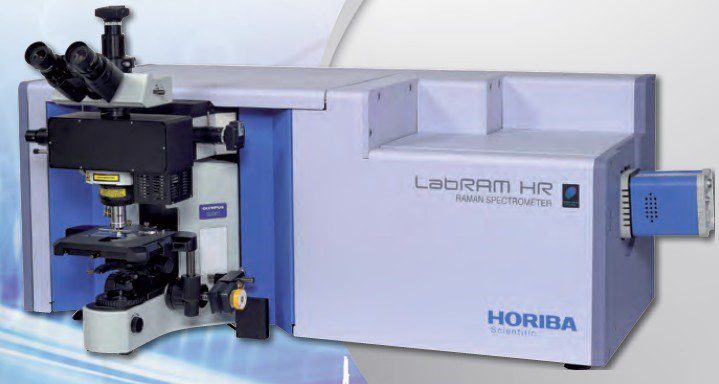RAMAN LABRAM HR EVOLUTION
(RAMAN)
No Details
1 Location:
Nano Raman-Photoluminescence Spectroscopy Laboratory
(01-34-01)
2 Details of Instrument: Raman Spectrometer
Raman spectroscopy can provide key information about
chemical composition and material structure.
The Raman effect results from the interaction of laser light
With molecular vibrations within the sample, and is highly sensitive
To small changes in chemistry and molecular environment.
Basic Principal
It is based upon the interaction of laser light with the chemical bond within a sample. During the Raman scattering process, it has lost part of its energy to the material, causing some of the atoms to vibrate. (A laser photon bounces off a molecule and loses a small amount of energy equal to the vibrational energy of the molecule).
What laser wavelengths are used for Raman spectroscopy?
Laser wavelengths ranging from ultra-violet through visible to near infra-red can be used for Raman spectroscopy. Typical examples include (but are not limited to):
• Ultra-violet: 325 nm = He Cd
• Visible: 633 nm = Helium-neon
Application of Raman
• In Chemistry ; to provide chemical bonds and symmetry of molecules. Therefore, it provides a fingerprint by which molecule can be identified.
• In solid state physics : to characterize materials, measure temperature and find crystallographic orientation of sample.
• Others ; to observe other low frequency excitations of the solid, such a plasmons, magnons, and superconducting gap excitations.
3 Service Charge Please refer to P.I.C for quotation.
4 Operation Hours Sunday – Wednesday :
9.00 am – 1.00 pm
2.00 pm– 4.00pm
Thursday:
9.00 am – 1.00 pm
2.00 pm – 3.00 pm
5 Status Available for booking
6 P.I.C Amy Zuria Binti Abdul Ajid
amyzuria@utm.my
07-5557589
Md Razali Bin Rehat
mdrazali@utm.my
07-5557786
7 Download Booking Form Click Here

